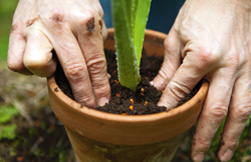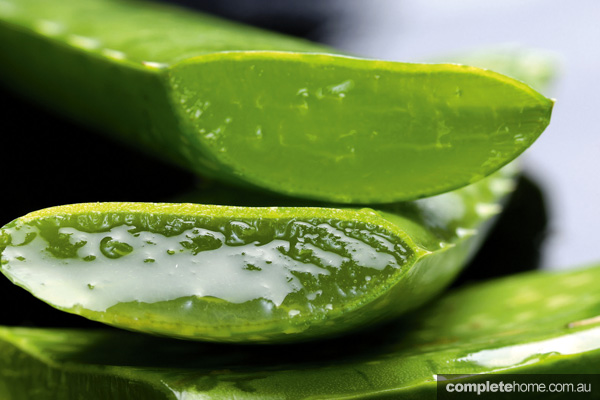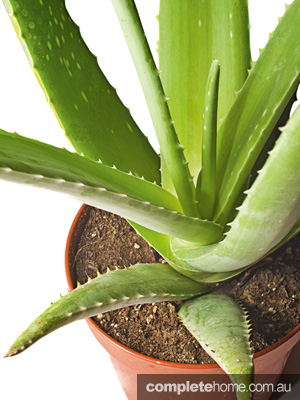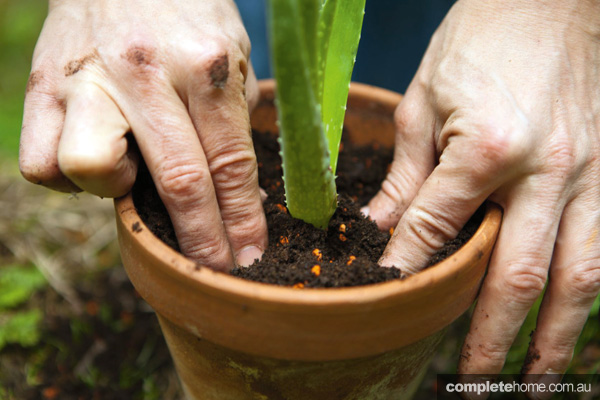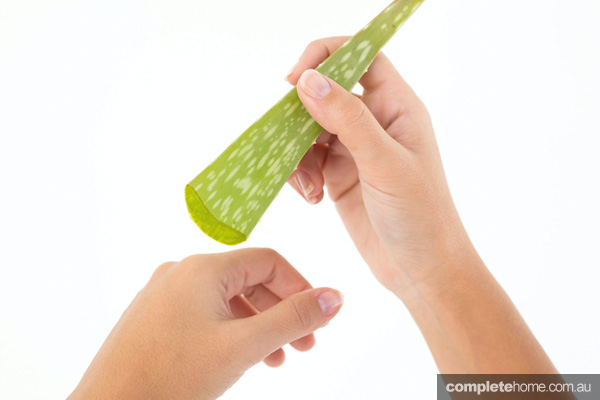Easy-to-grow aloe vera is one of the stars of the medicinal garden
Aloe vera is known as the first-aid plant because it is a soothing aid for cuts, burns and other wounds. The plant is reported to have antimicrobial, antibiotic, antioxidant, antihistamine and anti-inflammatory actions among a range of other beneficial effects.
The gel in its leaves has been used for a comprehensive list of complaints: as a pain and allergy inhibitor; for inflammation; to close cuts for cell regeneration and healing; to penetrate skin to reach tendons, muscles, joints and the lymph system; for abscesses, abrasions, acne and bed sores; for burns, including sunburn, canker sores, chapped lips, dry skin, dermatitis, herpes, nappy rash, heat rash, insect bites … the list goes on.
Researchers have found that aloe vera gel can penetrate seven layers of skin and can do it almost four times faster than water. It can be used directly from the plant by filleting a fresh leaf with a sharp knife and applying only the clear, undiluted gel to the skin. Avoid the yellowish sap under the green rind, though, as this is the laxative component; only use the sticky gel.
Both Cleopatra and Nefertiti were known to have bathed in aloe vera and they also drank the juice. The Egyptians recorded it on papyrus as “the plant of immortality”. It is mentioned in the Bible and was reportedly used in the burial of Jesus. Aristotle convinced Alexander the Great to collect aloe plants to use as medicine for his soldiers. It is rich in anthraquinones, which promote healing, and the gel matches the pH of our skin. Taken internally, it is a mild laxative thanks to its aloin content and the juice or gel is soothing to the stomach. The commercially bottled juice is widely available.
The plant’s spiky succulent leaf contains the all-important gel. It has four layers:
• The rind: the greenish outer layer.
• The sap: a layer of bitter-tasting yellowish liquid under the rind and surrounding the gel.
• Mucilage gel: the inner leaf area surrounding the gel.
• The gel: the centre of the leaf.
Growing
Aloe vera is super easy to grow and propagate and is ideal for growing in a pot. It can be grown from seed, leaf cuttings or offsets (also called pups). Most people get a cutting or offset from a friend’s plant as the plants need dividing from time to time when they have a lot of offsets.
This was the first plant I ever grew, as a young student moving between share houses and taking my aloe plant in its terracotta pot with me each time I moved. Sometimes it was indoors near a sunny window, sometimes on a balcony or outside.
The sun-loving aloe is a very hardy plant, tolerant of light frost, not too fussy about soil as long as it has some added organic material and drains well, and needing only infrequent watering. In fact, let a potted aloe vera dry out before watering again. Regular application of a weak seaweed solution is often recommended.
Using the gel
The easiest way to use the gel is straight from the leaf. Choose one of the oldest leaves and cut it straight across. Hold the piece you have cut off cut-side down and it will start to ooze immediately.
Gently squeeze (not too hard) and dab the wound, bite or burn with the cooling gel. Wrap the rest of the leaf in cling wrap and keep in the fridge, ready to cut a piece each time you need to apply the gel again.Alternatively, split a leaf open with a sharp knife and peel back the outer leaf to access the clear gel in the middle. Use a tablespoon to carefully scrape it out and store in a container in the fridge where it will keep for a few weeks.
Originally from Good Organic Gardening, Volume 6, Issue 2
